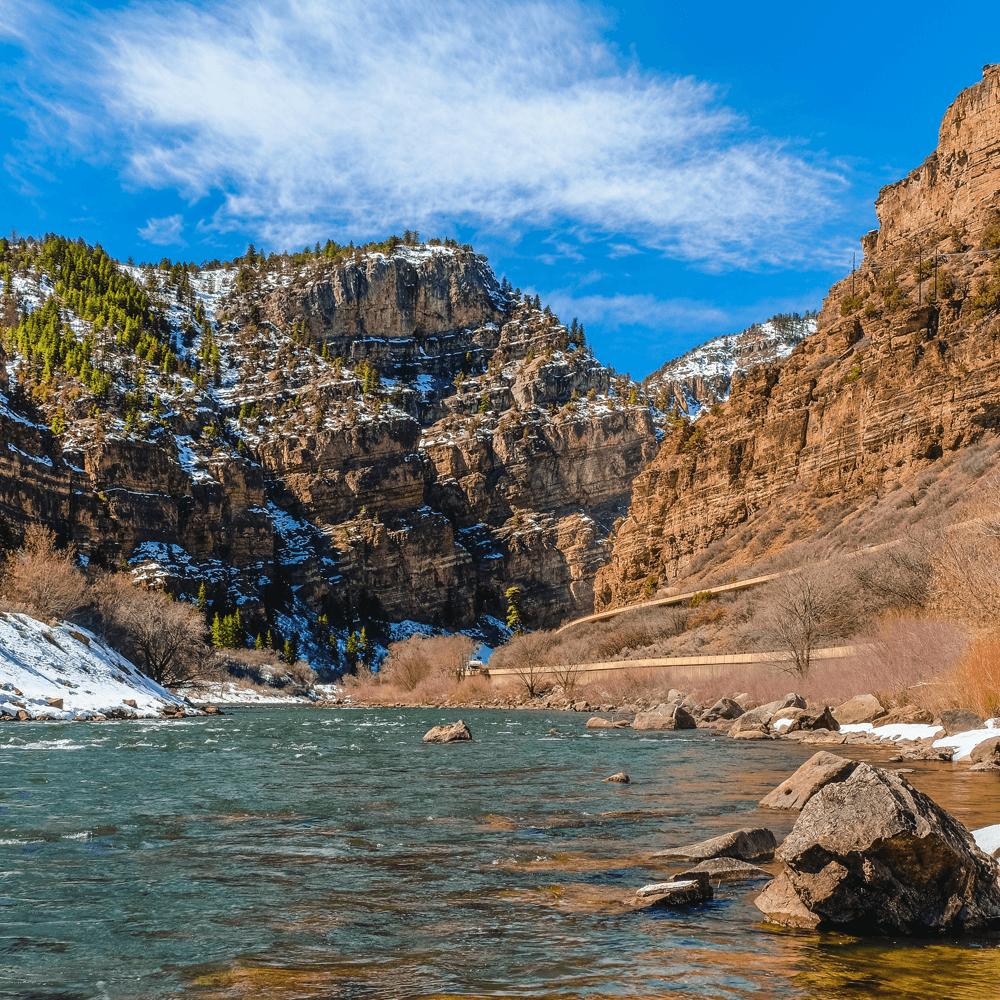AMWUA Blog
BY: AMWUA StaffWinter snowpack brings short-term relief but doesn’t change the trajectory of the Colorado River

The Colorado River system is projected to reap the benefits of this winter’s above-average snowfall, at least for the short term. While it may bring a minor reprieve, the Colorado River Basin still suffers from the consequences of a severe drought, a changing climate, overallocation, and the fact that it’s been producing historically less water. To put it into perspective, the Bureau of Reclamation said Lake Powell and Lake Mead — the two biggest reservoirs in the country are only at a combined 26% full, which is why it would take multiple years, like this winter, to undo the damage and restore the reservoirs that remain historically low.
These latest projections for increased inflows into Lakes Powell and Mead were announced last week when the April 24-Month Study was released from the Bureau of Reclamation.
“This winter’s snowpack is promising and provides us the opportunity to help replenish Lakes Mead and Powell in the near-term — but the reality is that drought conditions in the Colorado River Basin have been more than two decades in the making,” said Reclamation Commissioner Camille Calimlim Touton. “Despite this year’s welcomed snow, the Colorado River system remains at risk from the ongoing impacts of the climate crisis. We will continue to pursue a collaborative, consensus-based approach to conserve water, increase the efficiency of water use, and protect the system’s reservoirs from falling to critically low elevations that would threaten water deliveries and power production.”
Water managers across the Basin understand this is good news as the projected levels for Lakes Mead and Powell are higher than they have seen in years. Still, they know the overall trajectory of the system is declining and cannot be ignored. That is why they remain focused on finding common ground through a collaborative agreement to protect the Colorado River for the 40 million people that rely on it for the long term rather than living on the edge year after year.
While the seven Basin States work on an agreement in response to the draft SEIS released by Reclamation earlier this month, local water providers, like the AMWUA cities, intend to take advantage of the reprieve by ensuring they plan for the inevitable – a future with less Colorado River water. Their planning initiatives include investing in infrastructure, ramping up conservation programs, and exploring water resiliency projects – all of which will increase our collective resiliency in the desert.
So yes, the latest projections have lightened some of the immediate pressure facing water managers as the Colorado River crisis escalated quicker than originally projected or anticipated. Still, the River remains in a precarious situation, damage has been done, and protecting the Colorado River system through collaborative actions from water users from across the Basin remains a priority, just as it should.
What is the 24-Month Study, and why does it matter?
First and foremost, the 24-Month Study is central to how the Colorado River is managed. It is a study, or forecast, of reservoir conditions along the Colorado River for the next 24 months. Its contents can impact the water supplies used by millions of people who rely on the Colorado River, including here in Central Arizona.
The Study is also critical in determining how Lake Powell (behind Glen Canyon Dam) and Lake Mead (behind Hoover Dam) will be operated. The Bureau of Reclamation currently operates both reservoirs in a coordinated, balanced fashion primarily determined by how much water is stored in each reservoir. The level of Lake Powell is affected mainly by runoff generated from snowmelt high in the Rockies. In contrast, the level of Lake Mead, located downstream, is primarily managed by how much water is purposefully released from Lake Powell.
The April 24-month Study is unique because it gives us our first solid look at spring and summer runoff conditions after the winter season has ended. Based on April’s projection, more or less water may be released from Powell to Mead than previously planned. That change in the amount of water released into Lake Mead will offer a better picture of what to expect in August, when the August 24-month Study will determine what level of shortage will be declared and implemented in January of the following year.
To print or save this week's blog, a PDF version is available HERE .
For over 50 years, the Arizona Municipal Water Users Association has helped protect our member cities' ability to provide their communities with assured, safe, and sustainable water supplies. For more information, visit www.amwua.org .
